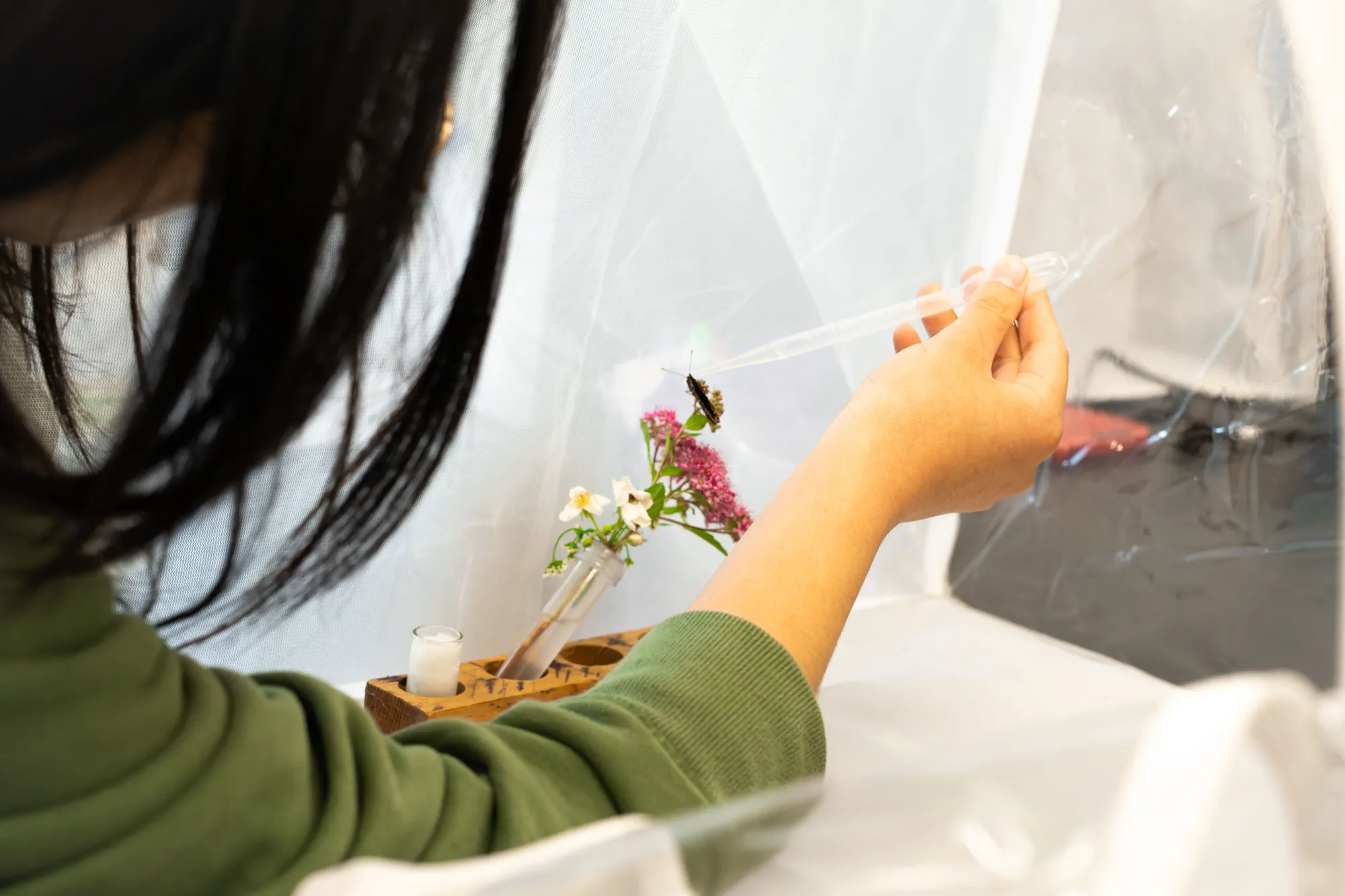On Butterflies and Moths in a Changing Climate
CEEDS Research
Detailing the Work of Mariana Abarca
Published April 4, 2024
As a biology student in Mexico, Mariana Abarca was primarily interested in plants. She was particularly fascinated by the diverse ways plants reproduce and assumed that this is where she would focus her studies. On a trip to the tropical dry forest on the west coast of Mexico, though, Abarca had a revelation: “I realized that what I liked the most about the plants is how they respond to the insects that eat them.”
Fast-forward a number of years, and Abarca is now an assistant professor of biological sciences at Smith and an insect ecologist studying plant-insect interactions from a global change perspective. A Center for the Environment, Ecological Design & Sustainability (CEEDS) faculty fellowship over the past two years has allowed her to lay the groundwork for several long-term projects, including studying the feeding habits of the Baltimore Checkerspot butterfly and establishing an automated moth monitoring station run primarily by students at the MacLeish Field Station. Both of these projects have allowed Abarca to work collaboratively with faculty and students from several other departments.
“I realized that what I liked the most about the plants is how they respond to the insects that eat them.”
Abarca’s main research interest in the Baltimore Checkerspot project is how plant-eating insects respond as the climate changes and the plants they usually feed on become scarcer. The Baltimore Checkerspot has primarily fed on native white turtlehead or Chelone glabra, which grows mostly in wetlands. As climate change has caused the weather to become hotter and drier, the Baltimore Checkerspot has also been feeding on the non-native narrow-leaved plantain, or Plantago lanceolata, which thrives in dry environments and spreads easily. Abarca plans for a comparative study, with multiple butterfly gardens containing both plants at the MacLeish Field Station and on the Smith campus itself. Through studying the caterpillars that will become Baltimore Checkerspots, she hopes to discover how insects include new plants into their diets and how feeding on new plants affects the ability of the insects to adapt to hotter and drier conditions. This matters, she says, because “understanding how insects respond to environmental changes is crucial for creating effective plans to control pests and conserve wildlife and beneficial species of insects.” Abarca has already established two butterfly gardens each at MacLeish and on campus. Recently, the project was recommended for funding by the National Science Foundation, which should allow her to eventually increase the number of gardens at each location. One advantage to this type of on-location research, Abarca says, is that she can include students early in their Smith careers who are not necessarily biology majors, giving them hands-on experience in ecology that will benefit them no matter their future plans.

Photo by Anna Siegel
Her second CEEDS-funded project is located at MacLeish and goes by the name “The Mothitor,” short for Moth Monitor, which involves automated moth monitoring as a means of gathering data about insect decline. Put simply, Abarca says, “We know many species are declining. We think it’s bad. But we don’t know enough about enough species to know how generalized this is. We need monitoring data. But monitoring data is very hard to fund because it’s not a breakthrough.” And not only do they need monitoring data, but it needs to be automated for efficiency’s sake. Enter the Mothitor.
The Mothitor has been a work-in-progress since the summer of 2022, and in that time, the device itself—which includes lights, a camera, and a surface on which the moths and other insects land—has been through multiple iterations. “I’ve been learning with the students as we develop this project,” Abarca says. “And then I've been networking with people who have been doing this for longer and learning from them and then applying it to our work. So it’s been a learning experience for everyone.” Creating and maintaining the Mothitor has (so far) involved four other faculty members and ten students from the biology, computer science, engineering and environmental science departments, along with staff from the Center for Design and Fabrication and CEEDS. Each version becomes more refined and effective as Abarca and her students learn from the previous iterations. Mothitor version 4.0 is due to debut in the summer of 2024.
Abarca’s plans for the Mothitor go beyond Western Mass. Once it is fully established at MacLeish, she hopes to expand the program regionally through Massachusetts. Her ambitions don’t end there, though. Eventually, she hopes to bring it to the tropical dry forest of western Mexico, a place where seasonality is determined by rainfall rather than by temperature, and also the place where she first discovered her own fascination with insects.
